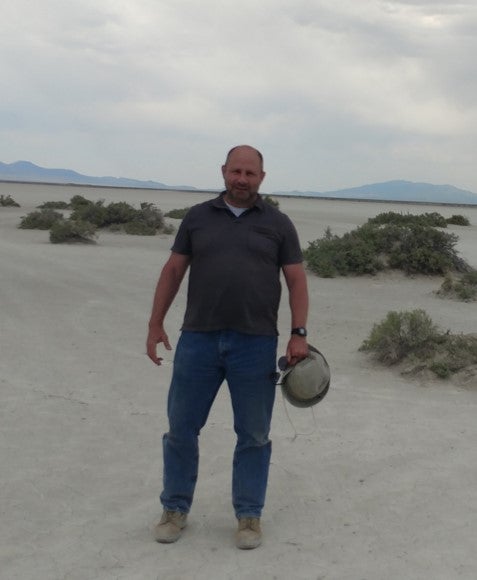Two geoscience students recently were awarded the Jack Kleinman Memorial Fund for Volcano Research. Master’s student Maggie Holahan and undergraduate Justin Crevier both received awards to support their proposed research in the field of volcanology.
The Jack Kleinman Memorial Fund for Volcano Research was created in memory of Jack Kleinman, a U.S. Geological Survey employee who died in a kayaking accident in 1994. The grant promotes collaborative projects on volcanoes among USGS scientists and university students by selecting awardees who are undertaking promising field-based research in volcanology. Recipients exhibit the characteristics that best defined Jack Kleinman: exuberance, integrity, reliability, loyalty, and the abilities to relish challenge, inspire enthusiasm in others, and delight in the natural world.
Justin Crevier: Refining the ‘How’ and ‘Why’ of the Mt. St. Helens eruption

Geoscience and physics double major Crevier credits a course with professor Brittany Brand as his gateway into the world of volcanology research. After retiring from careers in the Marine Corps and later the Foreign Service, Crevier came to Boise State and found volcano research to be a fascinating challenge.
“Volcanology is an extremely broad field, ranging from chemistry and physics, i.e. ‘how do eruptions occur?’ to geography and psychology, i.e. ‘how do we effectively communicate eruption risks to vulnerable populations?’” said Crevier.
The goal of his own research is to understand what happened between two specific phases (the Blast and Plinian phases) of the May 1980 Mt. St. Helens eruption. The Jack Kleinman Memorial Fund will help fund Crevier’s goal to collect samples and data on Mt. St. Helens’ pumice plain this year, and perform in-depth laboratory analysis on those samples in the lab.
“The more we can learn about how and why the 1980 Mt. St. Helens eruption happened, the better we can understand how future Plinian-scale eruptions are likely to occur, in different spots around the world,” said Crevier.
“I am thrilled to work on this project with Justin, who is an incredibly promising scientist,” said Brand. “Justin’s efforts have the potential to inform what controls shifts in eruption styles, which has direct implications for volcanic hazard and risk. Collaborating with the Cascade Volcano Observatory will ensure both a local and global impact of the work.”
Crevier says that in his future goals, he hopes to earn a Ph.D. in planetary science, and work in either research or public outreach/educational access. A song that is always on his playlist is “Biko” by Peter Gabriel.
Maggie Holahan: Listening to the World’s Tallest Geyser

Steamboat Geyser, located in Yellowstone National Park, is currently the world’s tallest active geyser, as well as Holahan’s primary research site. Holahan’s research requires ‘listening’ to the geyser by using infrasound sensing technology in order to learn more about the geyser’s active phase.
“In our research group we use infrasound, or low frequency sound that is below the human hearing threshold, to get a sense for their activity and what that might mean for future events,” said Holahan. “Steamboat has experienced only two previously recorded active phases since the 1960s. An active phase means that the geyser has frequent major eruptions at regular intervals overtime, during the summer months an eruption occurs on average every seven days.”
Holahan hails from Bloomington, Indiana, and completed her bachelor’s in geological science at Indiana University in 2017. She first discovered geophysical volcanic monitoring techniques during an internship through the National Association of Geoscience Teachers US Geological Survey Cooperative Field Training Program at the Cascades Volcano Observatory.
“I first worked with acoustic monitoring as a Geoscientists-in-the-Parks guest scientist at Grand Canyon National Park focusing on anthropogenic noise impacts from overflight events. I was excited to discover the field of volcano acoustics and combine my interest in the geophysical monitoring of volcanic systems with the technique of acoustic based sensing,” said Holahan.
“Maggie’s work in Yellowstone is really important,” said associate professor of geosciences Jeffrey Johnson. “The Yellowstone Volcano Observatory, which is a division of the USGS, is planning to incorporate infrasound for their monitoring operations. Maggie’s investigations will help guide the design of monitoring infrastructure in Yellowstone in the years to come.”
Holahan hopes that in her future she will be able to continue geophysical-based research and monitoring (“with lots of fieldwork!”) working for a government agency or research institution. A song that is always on her playlist is “This Must Be the Place” by Talking Heads.